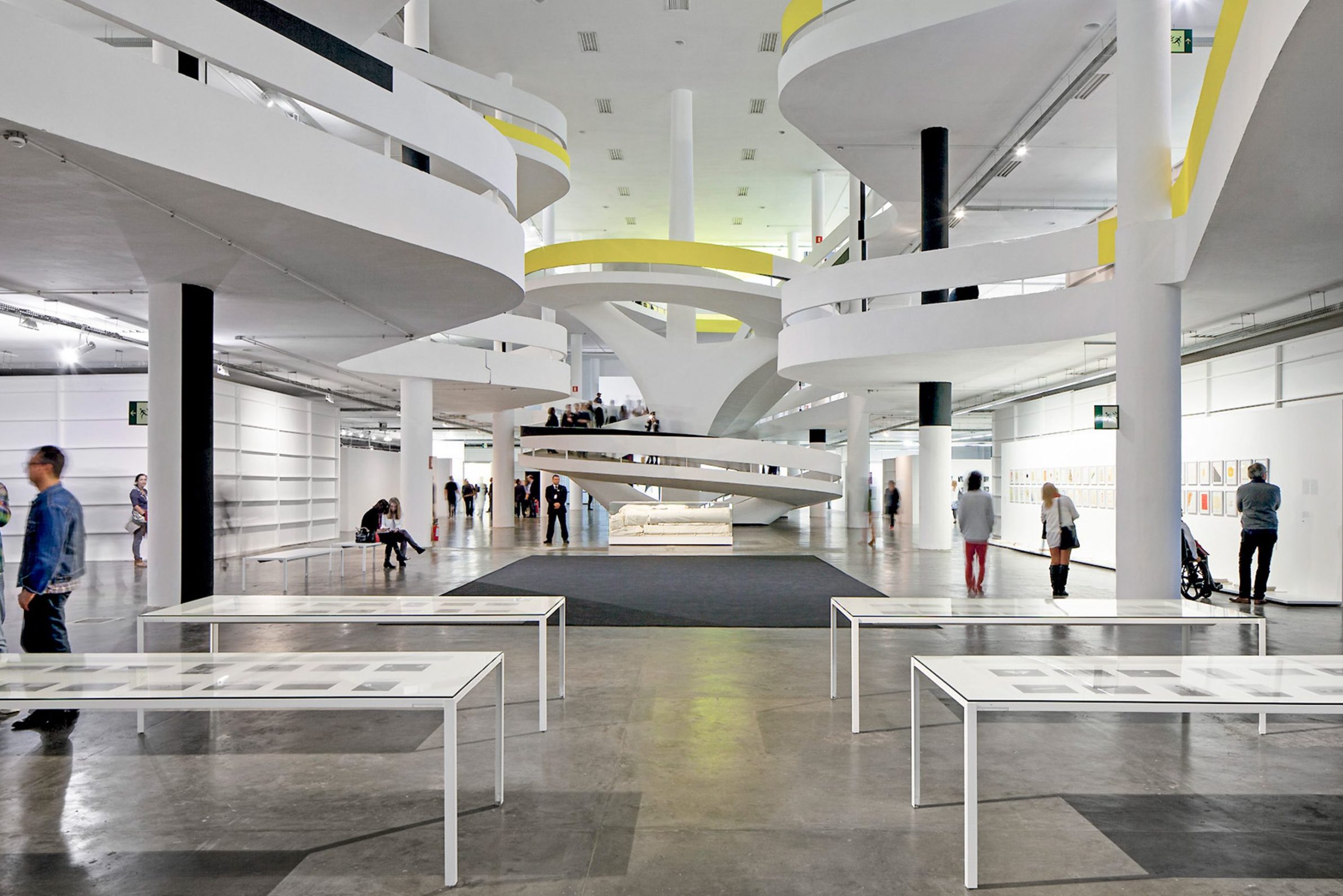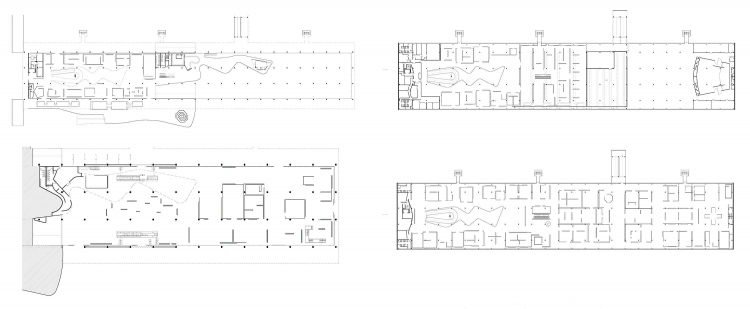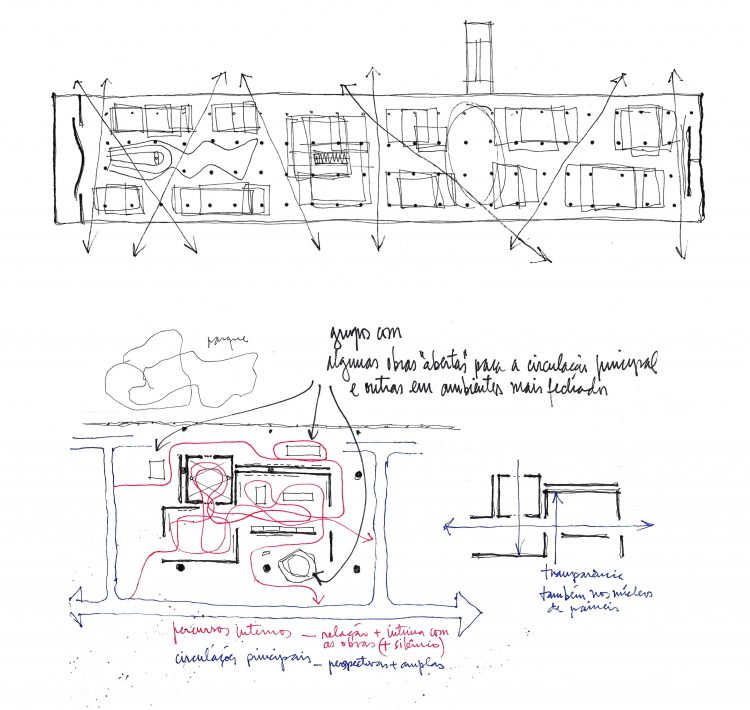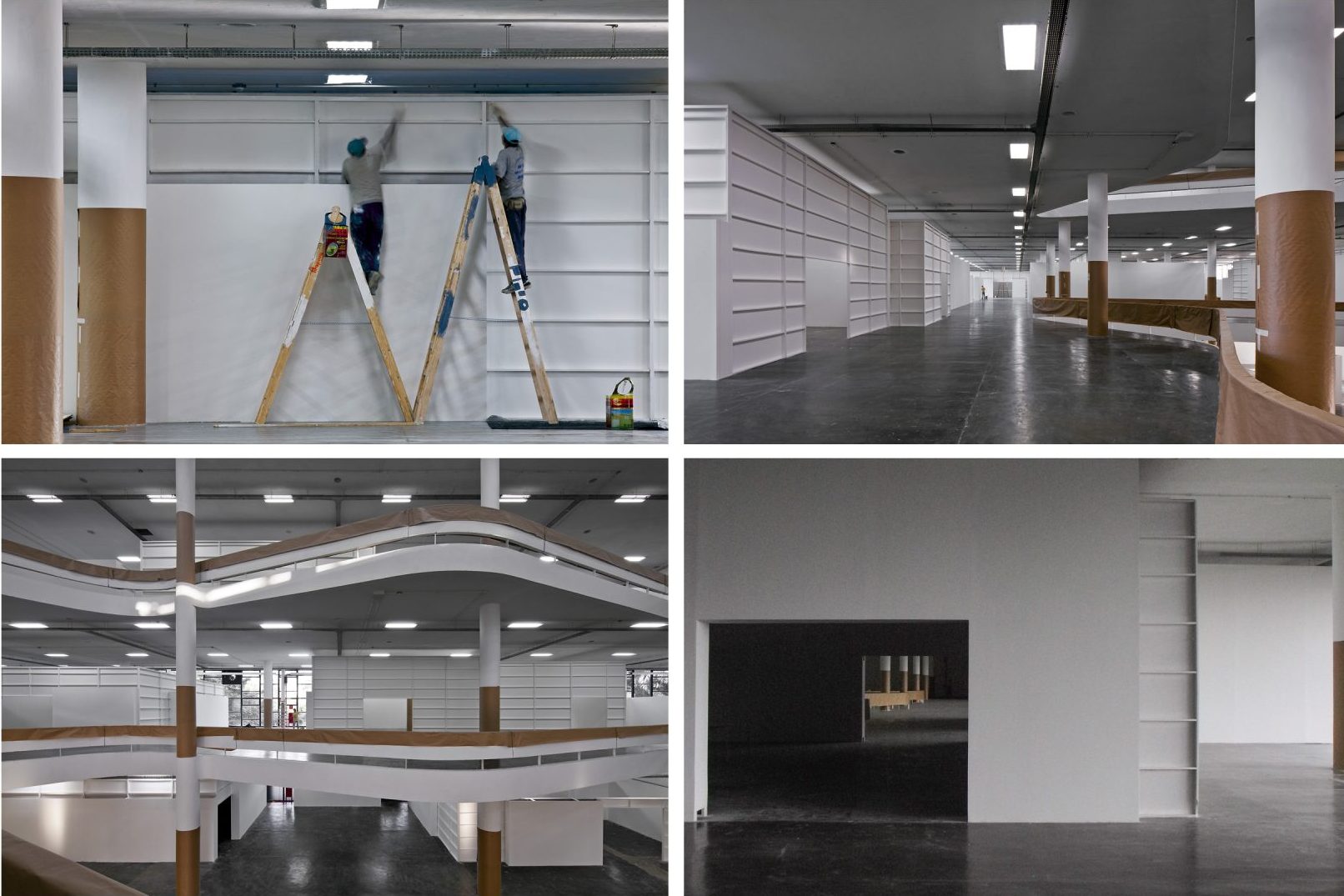
The project for the exhibition design of the 30th Biennale can be divided into two fronts, which I developed in parallel: creating a modular system that would allow flexibility and agility in assembly, given that, based on the preliminary evaluation of the curatorial ideas, it would be a biennale requiring many “walls”; and creating design tools that could effectively involve the curators in the process of defining the space.


We created only three types of panels, without cutting wood, in different heights, which allowed for a super-efficient assembly line. I also made a large model of the pavilion, scaled sufficiently to view and evaluate each space in three dimensions, and, like a construction toy, we reproduced the panel system. Using this tool, we assembled and disassembled the exhibition almost daily with the curators and producers, in an office within the biennale pavilion, for 3 or 4 months, keeping the final form in suspense until all variables were stabilized. Additionally, we built three rooms at full scale using the modular system we invented, on an open floor of the pavilion. This not only helped to detail and refine the construction design but also provided the curators, producers, and designers with a real reference for what the model represented.



In addition to the general approach, a crucial factor for the success of the exhibition design was having “designed” and invented a construction process for the exhibition, actively involving all the stakeholders.
Another influential factor in the outcome was the familiarity with the Oscar Niemeyer building—a pavilion of monumental dimensions, 250 meters long and 50 meters wide, with 25,000 square meters—acquired as the coordinator of Paulo Mendes da Rocha’s team for the design of the exhibition layouts for the 23rd and 24th Biennials and in the coordination of the architectural work for the “Brazil 500 Years” exhibition.


The structuring principle of the exhibition design was to create different environments for the perception of artworks by segregating general circulation—moving from one place to another—from the circulation around the artworks, with two different rhythms or speeds. Therefore, while creating more reserved and information-dense rooms, the spaces “outside” these environments, the circulation areas, had almost no visible artworks. This visual silence was important to allow alternation between rest and focus. The challenge was to create, simultaneously, reserved environments and fluid pathways.
In addition to this, we had a fairly intense focus on sound control, using acoustic materials that were not visible but eliminated a very annoying background noise, which is usually unnoticed but makes staying in the pavilion tiring after some time.
Since our office is 90% focused on building or urban projects, we used the opportunity to deviate from traditional exhibition design, with constructive research and incorporating more architectural rather than museological solutions.
Descriptive memorial of the project by Martin Corullon


Technical Specification
Project Type Exhibition Design
Project Year 2012
Address Bienal, São Paulo, SP
Architectural Design Martin Corullon, Helena Cavalheiro, Felipe Fuchs, Bruno Kim, Marina Ioshi, Rafael de Sousa, Francisca Lopes
Photography Leonardo Finotti









